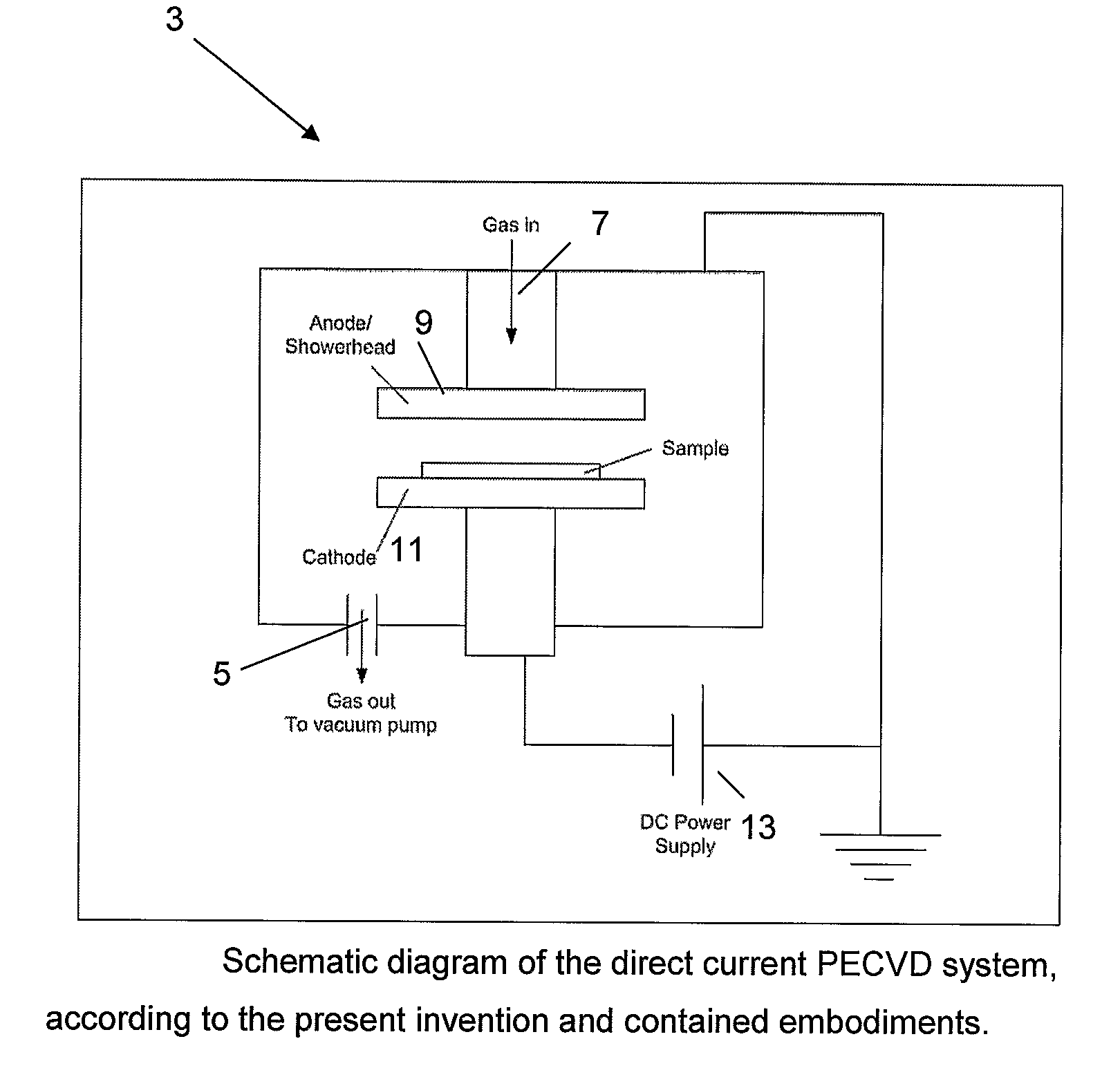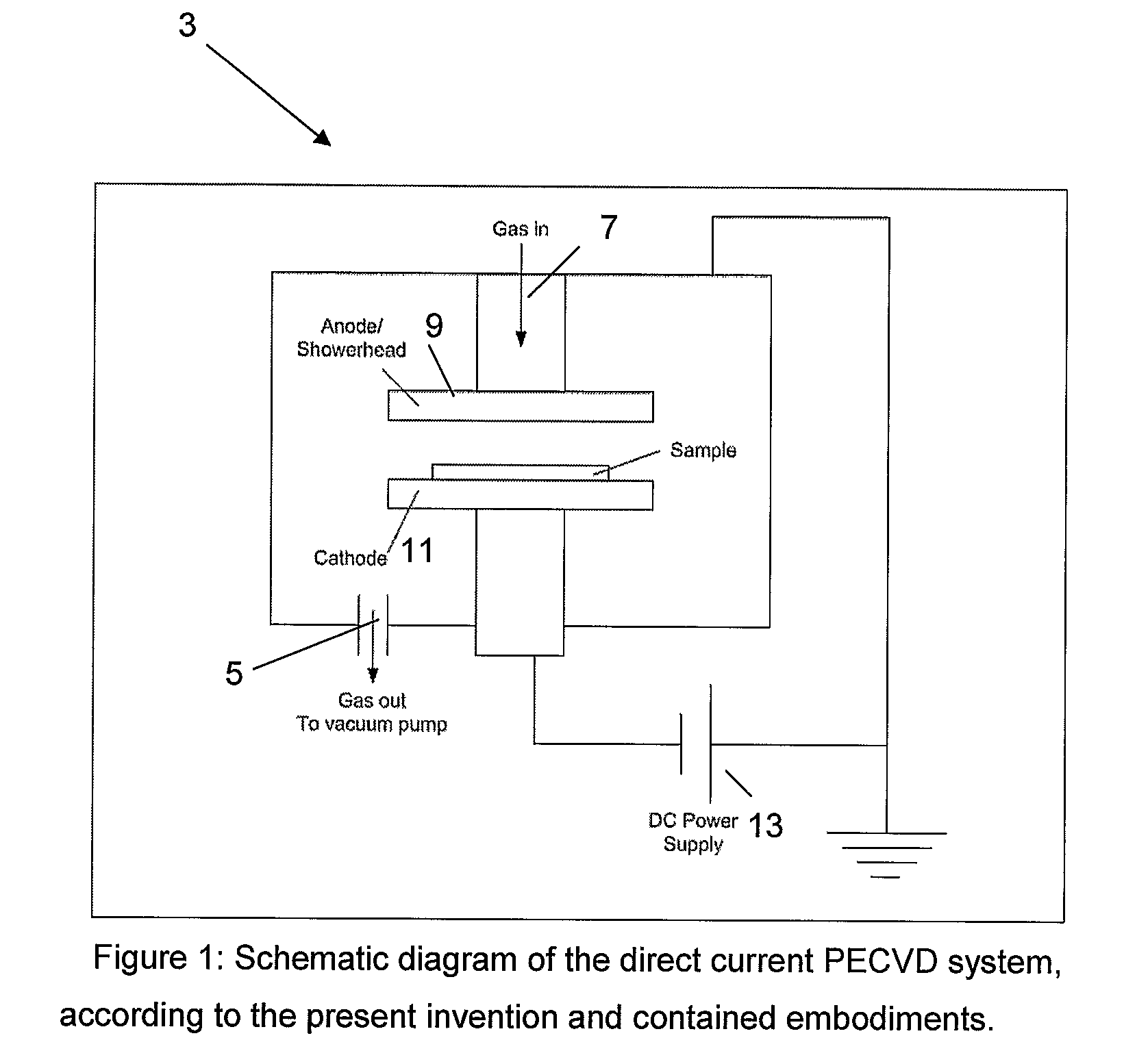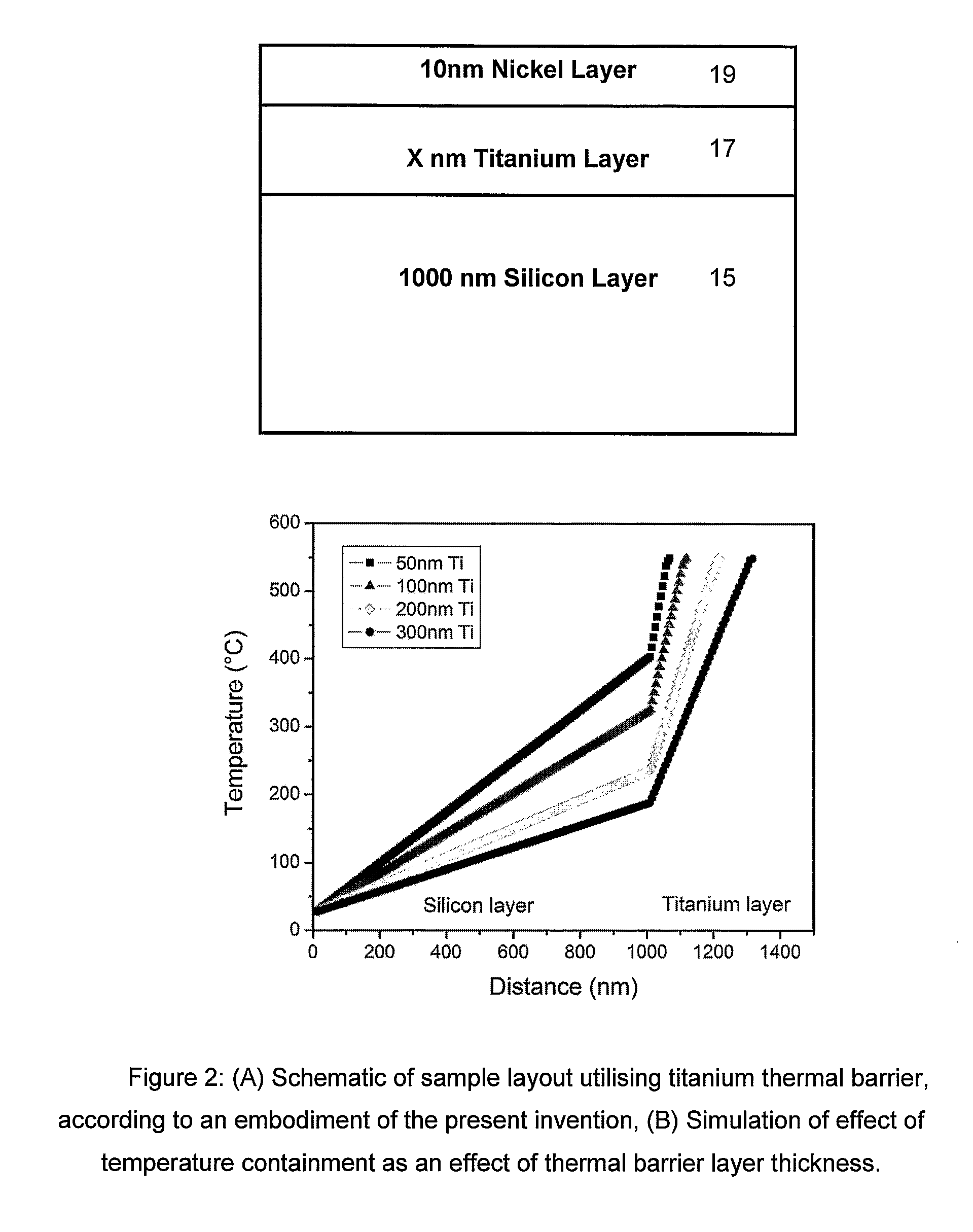Nanostructure production methods and apparatus
a technology of nanostructures and production methods, applied in the field of nanostructure production methods, can solve the problems of severe limitations affecting application development, and achieve the effect of reducing heating effects on the substrate and increasing the range of materials
- Summary
- Abstract
- Description
- Claims
- Application Information
AI Technical Summary
Benefits of technology
Problems solved by technology
Method used
Image
Examples
first embodiment
Description of First Embodiment
[0066]In this embodiment, the invention allows the deposition of low defect level carbon nanotubes, though not specifically, at low substrate temperature below 350° C. It should be clear to a skilled person that the invention can be extended to other materials.
[0067]Referring firstly to FIG. 1, the plasma chamber 1 of a home built direct current PECVD system 3 is used as shown. A vacuum chamber housing is capable of evacuation with the pressure being controlled by a manual leak valve (not shown) at the vacuum pump inlet 5. The chamber has a gas inlet 7 for receiving a flow of the required gas or gaseous mixture, typically a hydrocarbon gas such as acetylene, C2H2. It should be obvious to a skilled person that any carbon containing gas could be used.
[0068]An earthed electrode (anode) 9 is also part of the shower head is provided in the upper part of the chamber 1, whilst a powered (negatively biased) electrode (cathode) 11 is provided in the lower part ...
second embodiment
Description of Second Embodiment
[0080]The invention according to the second embodiment allows the deposition of low defect level carbon nanotubes at low substrate temperature below 350° C. in the application of interconnects 27 used in microelectronics. Interconnects are used in integrated circuits for carrying large current densities. A suitable material would be the carbon nanotubes due to its covalent structure not subscribing to much electromigration, high current carrying capacity and ballistic electron transport capabilities giving rise to low resistivities for high current flows. Microelectronic processes often require substrate temperatures to be kept below 450° C. to prevent excessive diffusion of dopants through the increased creation of vacancies in silicon.
[0081]FIG. 6 shows the use of low thermal conductivity materials to isolate the heating from the neighbouring devices 29 such as transistors, etc. The location of the interconnect 27 can be defined through existing lit...
third embodiment
Description of Third Embodiment
[0085]The invention according to the third embodiment allows the deposition of carbon nanotubes or alternative nanowires in a layer 28 at low substrate temperature below 350° C. in the application of sensing platforms. Carbon nanotubes or other nanowires are utilised as materials for chemical, mechanical, etc sensors due to their unique properties and high aspect ratio (which results in increased surface area). In this embodiment, a temperature sensitive substrate 15 such as plastic is used. A plurality of devices 29 are provided on the substrate 15. The use of temperature sensitive materials is not limited to substrates and can be extended to active devices such as organic transistors used in the application.
[0086]Referring to FIG. 7, the thermal barrier layer 17 can be described as enclosing the device region. The catalyst is laid on the required region and NTs are deposited using a similar technique as the first embodiment. A contact layer 18 is pro...
PUM
| Property | Measurement | Unit |
|---|---|---|
| temperature | aaaaa | aaaaa |
| thickness | aaaaa | aaaaa |
| temperatures | aaaaa | aaaaa |
Abstract
Description
Claims
Application Information
 Login to View More
Login to View More - R&D
- Intellectual Property
- Life Sciences
- Materials
- Tech Scout
- Unparalleled Data Quality
- Higher Quality Content
- 60% Fewer Hallucinations
Browse by: Latest US Patents, China's latest patents, Technical Efficacy Thesaurus, Application Domain, Technology Topic, Popular Technical Reports.
© 2025 PatSnap. All rights reserved.Legal|Privacy policy|Modern Slavery Act Transparency Statement|Sitemap|About US| Contact US: help@patsnap.com



